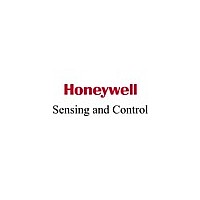HIH-6130-021-001 Honeywell Sensing and Control, HIH-6130-021-001 Datasheet - Page 2

HIH-6130-021-001
Manufacturer Part Number
HIH-6130-021-001
Description
SENSOR HUMIDITY 3.3V 5% SMD
Manufacturer
Honeywell Sensing and Control
Specifications of HIH-6130-021-001
Mfg Application Notes
HIH-6130,6131 Medical, Industrial Appl
Output Type
I²C™
Sensor Type
Humidity and Temperature
Lead Free Status / Rohs Status
Lead free / RoHS Compliant
Other names
480-3651-2
HIH-6130/6131 Series
SENSOR REHYDRATION
Table 1. Environmental Specifications
Table 2. Humidity Performance Specifications
Notes:
1. Accuracy is specified at the typical supply voltage of 3.3 Vdc and at 25 °C [77 °F]. It is the maximum deviation from the ideal transfer function of
2. Total error band is the maximum deviation from the ideal transfer function of relative humidity over the compensated range of 5 °C [41 °F] to
2 Honeywell Sensing and Control
Characteristic
Operating temperature range
Storage temperature range
Storage humidity
Soldering:
ESD
Latch-up immunity
Shock
Vibration
Light sensitivity
Characteristic
Supply voltage variation
Compensated humidity range
Compensated temp. range
Resolution
Accuracy
Total error band
Response time
Operating range
Long term stability
Impact of soldering
NOTICE
SENSOR REHYDRATION
automated
manual
relative humidity measured over the humidity range of 10 %RH to 90 %RH and includes all errors due to humidity non-linearity, humidity
hysteresis and humidity non-repeatability.
50 °C [122 °F]. It includes all errors due to humidity non-linearity, humidity hysteresis, humidity non-repeatability, thermal effect on zero, thermal
effect on span and thermal hysteresis.
Exposure to elevated temperatures, such as those
experienced during solder reflow, may dry out the sensing
element. It is recommended that the sensor be allowed
time to rehydrate after soldering or other high
temperature/dry exposures.
Exposure to these conditions will not permanently
damage the sensor. It will generally return to its factory-
calibrated value after rehydration.
If rehydration is not performed, the sensor may read a
slight offset that slowly disappears over time as the
sensor becomes exposed to ambient conditions.
Conversely, extended exposure to condensing and high
humidity environments (>90 %RH) may cause a revisable
shift in readings which will generally return to normal after
the sensor has been allowed to dry off.
1
2
MIL-STD 202G, Method 213D, Test Condition C,
MIL-STD 202G, Method 204D, Test Condition D,
half-sine, 6 ms ±3 perpendicular axis, 3 shock
apply heat for 4 s max. for manual soldering
IPC/EIA/JEDEC J-STD-020D, peak temp. of
MIL-STD 883H, Method 3015.7
IPC/EIA/JEDEC J-STD-020D
airflow minimum 20 l/min
14 bit ADC resolution
50 %RH for 5 years
2.3 Vdc to 5.5 Vdc
10 Hz to 2000 Hz
exposed to 50 lumens yellow light; exhibited no change in output
non-condensing
pulses per axis
260 °C [500 °F]
Condition
Condition
–
–
–
–
–
–
–
–
To rehydrate the sensor, expose it to room temperature under
ambient conditions (>50 %RH) for a minimum of five hours.
MOISTURE SEALING THE LEADS
If, in the presence of intermittent moisture or other
contaminants, there is the possibility of galvanic paths between
the leads, moisture seal the leads and exposed pads.
-25 [-13]
-40 [-40]
5 [41]
Min.
Min.
30
10
–
–
–
–
–
–
–
–
–
–
–
0
–
–
Issue 1
±0.05
Typ.
Typ.
0.1
–
–
–
–
–
–
–
–
–
–
–
–
–
–
6
–
–
260 [500]
350 [662]
50 [122]
85[185]
85[185]
50061154
Max.
±100
Max.
0.04
±1.2
±2.5
100
100
0.5
50
±4
20
90
±4
±5
8
°C [°F]
°C [°F]
°C [°F]
°C [°F]
%RH
%RH
%RH
%RH
%RH
%RH
%RH
%RH
%RH
Unit
Unit
mA
kV
g
g
s






